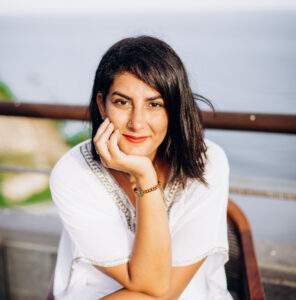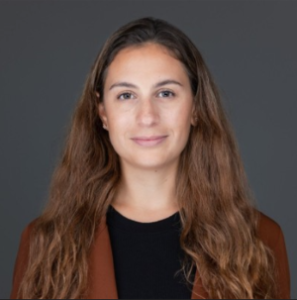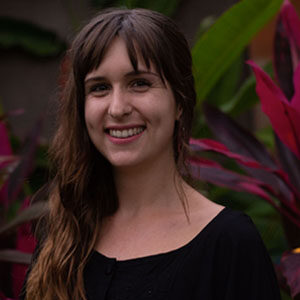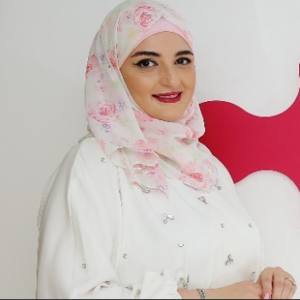The Case Study
Background about the initial version of the narrative:
Laila’s original version of the story, inspired by her father, an archaeologist, centered on her deep love for her homeland and heritage. However, she was consumed with interactions with peers and strangers, which left her grappling with conflicting emotions and unable to fully comprehend the broader context.
How have we helped the client:
The impact on the client from editing the narrative:
As we brought coherence to Laila’s narrative and identified the build-up towards her peak transformation point, we realized that the encounters deeply affecting her were what propelled her to travel within Saudi Arabia, share her people’s stories firsthand, and help change perspectives.
Today, Laila steps into her life with clarity about her role and societal contribution, functioning from an empowering and inspiring perspective for many.
Background about the initial version of the narrative:
Laila’s original version of the story, inspired by her father, an archaeologist, centered on her deep love for her homeland and heritage. However, she was consumed with interactions with peers and strangers, which left her grappling with conflicting emotions and unable to fully comprehend the broader context.
How have we helped the client:
The impact on the client from editing the narrative:
As we brought coherence to Laila’s narrative and identified the build-up towards her peak transformation point, we realized that the encounters deeply affecting her were what propelled her to travel within Saudi Arabia, share her people’s stories firsthand, and help change perspectives.
Today, Laila steps into her life with clarity about her role and societal contribution, functioning from an empowering and inspiring perspective for many.
Read the full narrative here!
Growing up in a loving family in Najd, Saudi Arabia, I was surrounded by the echoes of a rich cultural heritage. My father, an avid archaeologist with whom I spent weekends exploring the National Museum and historical sites like Mada’in Salih, had a contagious passion for our heritage that planted the seeds of curiosity and appreciation within me. I realized early on that there was much more to Saudi than the world knew, and even more that my own people often overlooked.
In the 90s, there was a general tendency to dismiss anything related to ancient culture and consider it ‘outdated’. People were mesmerized by what is deemed to be modern and contemporary. Consequently, they were looking outward, to the west, for inspiration instead of inward, to our own heritage. Certain aspects of our rich culture, for example, the Bedouins, nomadic tribes that have lived on our land since long before the modern kingdom of Saudi Arabia, were seen as the antithesis to progression. Unless cultural heritage and modernization are mutually exclusive?
My journey has been shaped by the questions I’ve always asked: What does being a Saudi mean to me? What is my dharma and can someone create theirs? What if it is related to my homeland? Can we fulfill our dharma while holding opposing emotions? Was I at peace with my identity and roots in the first place?
My search for answers, my desire to understand the complex tapestry of cultures that make up a ‘homeland’, and my curiosity to explore the world took me deep into the Kingdom’s regions and beyond its borders. Whenever I traveled, I was confronted with questions I couldn’t answer and feelings I didn’t understand. I wasn’t sure how I can be impressed by other ways of being yet stay rooted in my belonging and appreciative of my culture. I was both drawn to and drawn away from my homeland.
During my master’s degree at the University of Westminster in the UK, I found myself in conversations that, while interesting, were often disturbing. I would proudly discuss Saudi Arabia, only to be met with generalizations or cutting comments. Some people spoke of Saudi Arabia as if they knew it intimately, yet their understanding was often limited to sand, oil, and a perceived conservatism. Their narrow views, based on stereotypes rather than firsthand experience, frustrated me and I could feel them in my gut. However, I recall, on one trip my family and I made to the UK when I was a child, being really taken aback by this one British archaeologist. I listened in awe as he shared his knowledge about Saudi. I thought it was wonderful how someone from a different country could know so much about yours. If he could take such an interest, why was our own interest lacking?.
Yes, Saudi Arabia was misunderstood in the West and underappreciated by some of its own people.
Reflecting on these experiences, I asked myself, what do I need to do to instill genuine interest in my own people and change World’s perspectives? It was clear I needed to start with myself; educate myself more deeply about the different aspects of my culture, including the ones I didn’t fully align with. I decided to tell the stories of my people firsthand and travel to various regions of Saudi Arabi.
As I traveled within Saudi, I discovered the world’s largest self-contained oasis, Al-Ahsa, in the East and the tranquil flow of water through the arid landscape which produces some of the finest dates in the world. I also visited the soaring mountains of the Aseer Region, reaching heights of approximately 2,500 meters above sea level and overlooking verdant valleys. I was captivated by the untouched islands with their coral reefs and abundant marine life in the northwest.
From the cold north to the hot west, our country is not only geographically diverse but also boasts a variety of climates and racial groups.
I met the people of these regions and learnt that our kingdom is composed of multiple groups with different backgrounds and rich, unique histories and cultures. For example, one tribe in the Aseer region has distinctive cultural practices: their men wear intricate wreaths of grasses, herbs, and flowers on their heads, each representing the individual symbolically. The elements are chosen based on their believed properties, such as enhancing vitality, strength, beauty, or providing medicinal benefits. While men adorn their heads, the women adorn buildings with Al-Qatt design, a geometric art form passed down through generations. A common thread among all the tribes I met in the different regions was the genuine generosity, hospitality, and utmost respect for women. I wished that others could witness these qualities firsthand.
With a deeper understanding of my culture and my people, a newfound perspective, and a stronger sense of belonging and pride, I felt compelled to explore other cultures and able to challenge potential misconception held by others.
I finally have found an answer to one of my questions in Japan. They proved that pride in your roots and modernity weren’t mutually exclusive, and they provided a perfect example of how to represent your culture homogeneously and proudly to the visitor. From the minute I landed, I saw representations of who the Japanese were as a nation in everything: the way they spoke, the gestures they used when greeting you, and their general etiquette, architecture, and fashion. What’s more, they communicated these aspects of their culture harmoniously. Everyone was unique, but their collective presence impressed me even more. It may just have been a subtle hint towards their history, like a symbolic graphic on a modern style kimono, but there were hints everywhere.
My travels in Saudi Arabia, UK, and Japan completed the puzzle and clarified my vision; I wanted our culture and history to be as palpable to visitors as Japan’s was to me. The beauty of our land deserved to be seen. However, we could only attract visitors and challenge narrow perspectives if we stood
united and proud. To have pride in one’s identity requires a deep understanding of oneself and one’s rich cultural history. Only then
could we represent it harmoniously in the light it deserved.
Realizing I needed to practice what I preached marked a change in me. I made a conscious effort to look within and embrace who I was. My travels taught me that no place is perfect, each comes with its own beauty and flaws, and that we can hold both feelings simultaneously: being deeply rooted and appreciative while not concurring with everything. As a result, I felt a rejuvenated sense of love and belonging towards my roots, and peace towards my identity. That’s when my questions finally found their home. From this point on, everything seemed to fall where it was supposed to and the seeds that were planted all those years back with my father began sprouting. Saudi had started a new chapter. The country was working towards a shared vision (‘Vision 2030’), a strategic plan launched by Crown Prince Mohammad Bin Salman in 2016 to achieve three main goals: a vibrant society, a thriving economy and an ambitious nation. In one of the first pillar’s goals, there was a paragraph titled ‘Taking Pride in our National Identity’: ‘We take immense pride in the historical and cultural legacy of our Saudi, Arab and Islamic heritage. Our land was, and continues to be, known for its ancient civilizations and trade routes at the crossroads of global trade. This heritage has given our society the cultural richness and diversity it is known for today. We recognize the importance of preserving this sophisticated heritage to promote national unity and consolidate true Islamic and Arab values.’
There it was. A recognition of how our complex heritage had given birth to the rich culture along with a promise ‘to strengthen, preserve and highlight our national identity so that it can guide the lives of future generations’. In order to achieve vision 2030, Saudi was on a mission to restore cultural sites of importance, create appealing cultural events and build world class museums in order to attract more visitors. In fact, they aimed to double the number of UNESCO heritage sites! Saudi had realized that we could progress forward towards modernity whilst preserving our heritage: the two were not mutually exclusive and can co-exist. Moreover, Saudi Arabia has recognised the potential of the cultural sector in contributing to a more prosperous nation through tourism, besides oil.
Overwhelmed with joy at witnessing the changes I had dreamed of as a child; I landed an opportunity that would put me right at the center of them. It felt like everything I had encountered had shown me my dharma. I received an opportunity to work as the assistant outreach and education manager at Diriyah Gate Development Authority, the mandate of which is to ‘preserve, celebrate and develop the iconic landmark of Diriyah into a top global attraction which all Saudis can feel proud of’. Home to one of UNESCO’s world heritage sites, At-Turaif, our work strives to both preserve and revive the site and transform the wider Diriyah Gate area into a global gathering place. At the heart of everything we do is a drive to empower and engage the local community.
Over the past few years, I have played a significant role in fostering cultural development. I have crafted cultural programmes to engage, educate, and reflect the unity of our nation, while ensuring inclusivity and accessibility for all age groups by translating the knowledge into comprehensible educational content and tailoring it to suit various audiences. I organised interactive school visits and even developed online games to captivate the interest of the younger generation and connect them with their roots! One of my most fulfilling initiatives is the ‘Young Archaeologist Programme’, a scheme designed to inspire and support the upcoming generation of archaeologists. Working on and leading such projects was fulfilling on a soul level and reinforced the importance of my work.
I hope to see young generations find a deeper connection with their land and their ancestors. Now, I find myself in the same position as my father, buzzing with enthusiasm about our heritage and excitement for our future. None of this would have been possible without creating cultural bridges between the different aspects within us and among one another as a community. And as we stand stronger as a community, we will build stronger cultural bridges between us and communities in other countries, and between the past and the future.
Through that deeper understanding and appreciation of our own culture we will radiate what people should see: not the restrictions or differences, but the true beauty of the place we call home. That’s when life creates opportunities for us to give back – when it draws our dharma to us! it makes us cultural ambassadors by nature. And as ambassadors, we all share the responsibility of building bridges and shifting perspectives.
Let’s honor our past, embrace our present, and create a legacy that generations can be proud of, together.
For a greater, more prosperous future,
Laila
The Team




